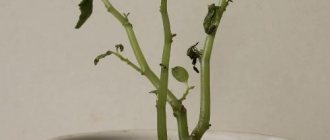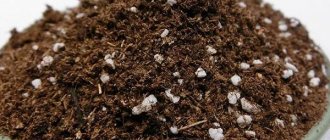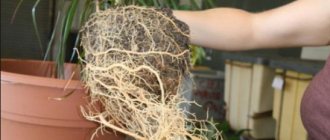Indoor violets are demanding and delicate plants, sensitive to even the slightest temperature changes and the presence of drafts, changes in lighting and soil quality.
Any disease of these flowers is immediately reflected in their appearance. The leaves become covered with plaque and spots of various shades, which determine the cause of the poor condition. Violet diseases manifest themselves as spots on the leaves; every gardener needs to know how to treat them and prevent their occurrence in the future.
Basic rules of care
Caring for violets at home is not difficult, the main thing is to comply with the necessary requirements for the following parameters:
- Choosing soil and pot. Soil with neutral PH is suitable for Saintpaulia. You can use a purchased mixture or prepare it yourself from humus, turf, pine soil and peat with the addition of baking powder. Pots should be chosen small, with a diameter smaller than the rosette of a flower.
- Placement and light. Violet loves light, but not direct sunlight. Therefore, it is better to place pots on the western or eastern side. There should be at least 10 hours of daylight, so in winter you will need fluorescent lamps.
Variety of homemade violets - Saintpaulia
- Temperature and humidity. The optimal temperature is 20-23 degrees, and in winter it can be reduced to 18. On hot days, the room should be regularly ventilated, avoiding drafts. Air humidity should be at least 50%. Plants should not be sprayed. During the heating season, it is better not to keep flowers near radiators.
- Watering. Use water at room temperature and carry out the procedure as the top layer of soil dries. Do not allow water to stagnate in the roots; empty the tray in a timely manner. It is recommended to limit watering in winter.
- Fertilizer application. Fertilizing is carried out during the growing season and flowering, approximately 2 times a month.
Violet cuttings ready for planting in the ground
To propagate violets, the leafy part of the plant is taken. The cuttings are kept in water until roots form, then planted in loose soil under cover. Can be propagated by seeds.
Advice! If Saintpaulia was purchased in a store, it needs to be kept in isolation for some time. This will eliminate the possibility of infection of home flowers if the violet is sick.
Powdery mildew
When affected by powdery mildew, the leaves of the plant begin to become covered with a white or grayish-white coating. It can be easily removed by rubbing the leaf. Under the coating, the leaf looks weakened. Fungal diseases also affect flower buds. Over time, the leaves turn brown and die, and the acquired color does not bloom.
Fungus is easier to prevent than to treat, as it takes more time and effort. But if the plant is still infected, then you need to follow the instructions:
- Destroy affected leaves and buds.
- Isolate the diseased plant from healthy ones. This is necessary in order not to infect neighboring flowers.
If the damage is minimal, then you can wash the leaves with a solution of potassium permanganate. You will need ¼ gram of manganese per liter of water. The procedure is repeated after five days to prevent re-infection.
For severe lesions, the following industrial preparations can be used:
- Topaz.
- Speed
- Zircon.
- Epin.
- Copper sulfate.
Flower parasites
Caring for indoor plants at home
Unpleasant guests on Saintpaulia are insect pests. What parasites are dangerous to the flower are described below.
Thrips on violets
Very small insects that suck sap from plants. It is difficult to see them with the naked eye, but their presence can be identified by characteristic signs: dried stamens, thickening of the pistil, shortening of the flowering period, gray coating on the leaves and their deformation, falling of unopened buds. Another danger of thrips is that they are carriers of diseases.
A sign of thrips on a violet is pollen scattered throughout the flower.
Ticks
Insects are divided into categories:
- soft-bodied,
- armored,
- arachnoid,
- flat beetles.
Violets are attacked by orange flat mites and cyclamen mites. What symptoms indicate the life of pests: thickening of the rosette, weak leaves with plaque, falling buds, shedding of pollen, dark spots on the inside of the leaf blades.
Cluster of cyclamen mites on the inner side of the leaf
Mealybug on violets
A sucking pest measuring 3-6 mm with many legs and long antennae. It produces mucus, which disrupts the gas exchange of the plant, and also damages the leaves and stems, as a result of which the flower stops growing. The root system also suffers, becoming moldy.
Peak activity of parasites occurs at the end of spring and beginning of autumn. Mold that appears on the ground may be a sign that mealybugs live on the violet.
Violet affected by scale insects
Ways to fight
To combat thrips, you can try traditional methods in combination with chemical fungicides:
- Dilute 1 ml of Fufanon in a liter of warm water and dip the above-ground part of the flower into the solution for a few seconds.
- Dilute an ampoule of the biological product Akarin and a cap of insecticidal shampoo in 500 ml of water and spray the plant.
The insecticide Iskra-Bio can be used against thrips. It paralyzes pests and is not addictive. Spintor is considered effective. One treatment is enough to eliminate insects, compatible with other biological and chemical agents.
To get rid of mites on violets, they will have to be treated with chemicals - acaricides. This is Sunmite, Mobento, Starmite. The most effective will be combination with anti-stress supplements (Epin, Zircon).
In the early stages of mealybug infestation, you can try folk remedies:
- treatment with soapy water (5 g of soap per liter of water);
- spraying with a solution of olive oil (2 tablespoons per liter of water);
- spraying with garlic infusion (5 cloves per liter of boiling water).
In other cases, you cannot do without pesticides - Phosfamide, Aktara, Aktellik. The most effective drugs are those that contain Diazinon, Parathion, Malathion.
Rust
Rust
You can lose your favorite violet due to the fungus Phragmidium, which causes rust - a dangerous disease of indoor plants. This disease should be recognized and treated in the early stages. The likelihood of violets becoming infected with rust is higher during the winter-spring transition period. Lack of sunlight, reduced immunity for this reason, and the presence of fungus in the apartment are the main causes of rust.
Signs of rust are clearly visible in the photo. Yellowish spots appear on the outer surface. Turning the leaf over, you can see yellow pustules - colonies of the fungus. When pustules rupture, fungal spores spread throughout the room and infect other plants. Having discovered signs of rust on your violet, you need to begin emergency treatment of the flower:
- remove and destroy leaves affected by the fungus;
- isolate the flower from other indoor plants;
- treat the leaves with a fungicide.
Help against rust: “Fitosporin-M”, “Baktofit”, “Topaz”. If the form is advanced, treatment may not help. In this case, destroy the plant and discard the flower pot.
Problems due to improper care
Wick watering of violets - how to do it yourself
Most often, signs of disease on violets are associated with improper care, due to which the plant’s immunity is weakened. It could be:
- excessive or insufficient watering;
- incorrect choice of fertilizers;
- non-compliance with temperature and humidity standards, drafts;
- exposure of the flower to direct sunlight;
- high soil PH.
Many flower growers are interested in the question of why violet leaves rise up. Most likely, they are drawn to the light. The cause may also be a dense outlet, low humidity, proximity to batteries or heating devices.
Violets lift their leaves up because they don't have enough light
Why else can a violet lift its leaves up?
- characteristics of the variety;
- improper development;
- poor soil mixture.
Have the violet leaves become smaller, duller and lifted up? This description speaks of a lack of light. If the leaf blades begin to curl inward, this may be the result of mites, as well as excessive watering and an excess of nitrogen fertilizers.
What to do if the violet has limp leaves? The wilting of a flower indicates non-compliance with the rules of watering, lighting, and fertilizing. Yellowing leaves may appear due to water exposure or sunburn. Circular spots form in the cold season when the plant is placed in a draft.
Violet leaves have sunburn
If the leaves turn black, the cause may be excessive soil moisture, prolonged exposure to cold air, or lack of nutrients. White bloom on violets or spots of unusual color are a sign of infection.
If Saintpaulia flowers and flower buds wither, there may be several reasons:
- dry air;
- high temperature in the room;
- lack of lighting;
- low level of soil acidity;
- use of unbalanced fertilizers.
If your homemade violet does not bloom, you will have to correct all the shortcomings in the maintenance - from the pot and the choice of soil to the watering rules.
Rotten
Root rot
The cause of root rot is fungi that peacefully parasitize in the substrate. But due to excessive watering, high humidity of the substrate, and poor-quality soil, these fungi begin to actively multiply and as a result, the violets become sick.
- Signs. The fact that the violet does not bloom for a long time may be the result of root rot in the violet. The violet becomes sluggish and its petioles become soft.
- Treatment. First of all, remove the violet from the pot and remove the damaged leaves. Cut off the root part; if you see brown spots on the cut, you need to cut off a little more of the stem. If the stem is further damaged by rot, throw away the violet, but if the stem is purple, this means that the plant is not damaged. Remove leaves from the healthy part of the stem to a height of 1-2 centimeters, spray with fungicide and leave for 30 minutes. To form new roots, place the plant in a substrate. In plant growing, this term refers to mixtures made up of various natural components and their substitutes. These components can be: peat, pine bark, sphagnum moss, fern roots, cover with a bag and quarantine. When new roots appear, plant the violet in a pot.
- Prevention. After replanting the violet, water in small portions every few days.
Stem rot
The stem of the violet also rots. This can happen due to overwatering after drying out. Also, pests can cause rotting of the stem of a weakened violet.
- Signs. First of all, the leaves of the violet begin to fade, the violet becomes covered with a dusty coating and becomes duller.
- Treatment. The same as for root rot.
- Prevention. The same as for root rot.
Gray rot
Gray rot appears on violets as a result of improper watering.
- Signs. Due to the fungus in the substrate, gray rot appears on the leaves. The leaves become soft. In a short time, violet disease can affect the entire plant.
- Treatment. Infected leaves are removed and the violet is treated with a fungicide. The cause of the disease, the fungus, spreads in the substrate, therefore, it must be changed immediately. If the violet disease has spread throughout the plant, it is destroyed.
- Prevention. Change the substrate from time to time. In plant growing, this term refers to mixtures composed of various natural components and their substitutes. These components can be: peat, pine bark, sphagnum moss, fern roots, reduce watering during the cold seasons.
Brown rot
Appears on rooted leaves and young rosettes.
- Signs. The stem becomes soft and changes color to brownish brown. Substrate In plant growing, this term refers to mixtures composed of various natural components and their substitutes. These components can be: peat, pine bark, sphagnum moss, fern roots, which under the rosette becomes white due to plaque.
- Treatment. Unfortunately, this violet disease cannot be cured.
- Prevention. But it is easier to prevent brown rot from spreading to other violets. To do this, treat the plant with a fungicide, phytosporin, from time to time. Monitor the condition of the soil of young plants; it should be loose and allow moisture to pass through.
A set of measures against diseases and pests
There are simple rules of prevention, the observance of which will protect Saintpaulia from infection with fungus and parasites:
- isolation of new flowers from domestic ones for 1-2 months;
- avoiding contact with field plants and fresh vegetables;
- regular treatment with water at room temperature and inspection;
- wet cleaning in places where violets are placed;
- timely processing of pots and pallets;
- compliance with basic care requirements.
Diseases and pests that violets suffer from can be very dangerous and lead to their death. The main condition for good immunity is proper care and maintenance. This will help to grow a healthy and flowering plant.
Where do diseases come from?
The most common causes of the disease are:
- Wrong soil. Infection is observed in flowers grown in garden or forest soil. It is best to purchase a special substrate for violets in the store.
- A lack of potassium, phosphorus and other minerals can lead to the formation of fungus.
- Excess nitrogen. Excessively nitrogenous soils lead to intensive development of fungal diseases.
- Improper care provokes the formation of diseases. Plants should not be kept in high humidity, too low or high temperatures, or in insufficiently lit areas.
How to treat violets
Which fungicides are best for violets?
When choosing means to combat violet diseases, you must adhere to the following rules:
- The fungicide must be approved for use at home. Toxicity class 3, no less.
- When purchasing a drug, you must carefully read the instructions on the package, which should indicate for what diseases it can be used. Some herbal remedies are only a means of prevention, but not treatment. For example, Fitosporin-M and others, if the violet is already affected, then they will not be of any use.
- The harm from using the drug should not exceed the benefits. No fungicides are effective against some diseases; spraying and getting on the roots will only worsen the situation. Initially, you should try to simply remove all the affected parts of the plants, lubricate the sections with copper preparations or sprinkle them with crushed coal.
- There are good drugs - biostimulants that increase plant resistance to disease. These are Epin, Zircon, Agate, Potassium Humate, Sodium Humate. You can spray the plant with one of them after all its diseased parts have been removed and the cuts have been processed. It is better to prevent a disease than to fight it, so you can use similar drugs in situations that are stressful for violets. After processing, place in a warm place without drafts and dimly lit, because the drug disintegrates in light.
- The drug should not spoil the appearance of the violet after spraying. For example, spraying with Bordeaux mixture leaves a whitish coating on the violet. When processed by Maxim - red.
- A systemic fungicide is more effective, since it is transferred through the vascular system of the plant to all its parts. Contact fungicides work only on those areas of the plant surface where they are directly applied during treatment. To improve the contact of the drug with the leaves, it is used together with green soap, and the plants are not sprayed, but washed. This is a lot of work if there are a lot of violets, and for some varieties with wavy leaves, for flower stalks with buds, it is impossible.
- It is advisable to avoid the use of fungicides with a strong, pungent odor.
- The best treatment is not chemicals, but the creation of comfortable living conditions appropriate to the given culture. Otherwise, no fungicides will help.











